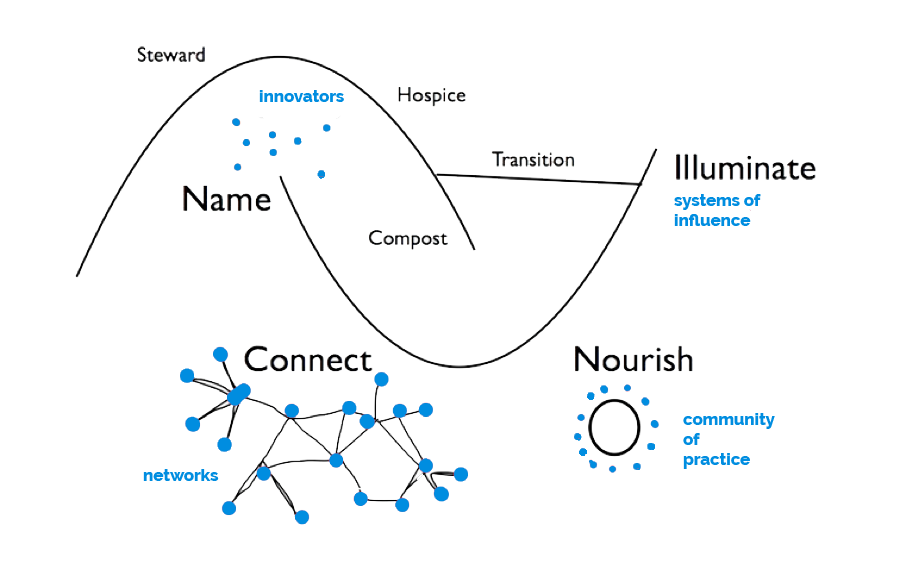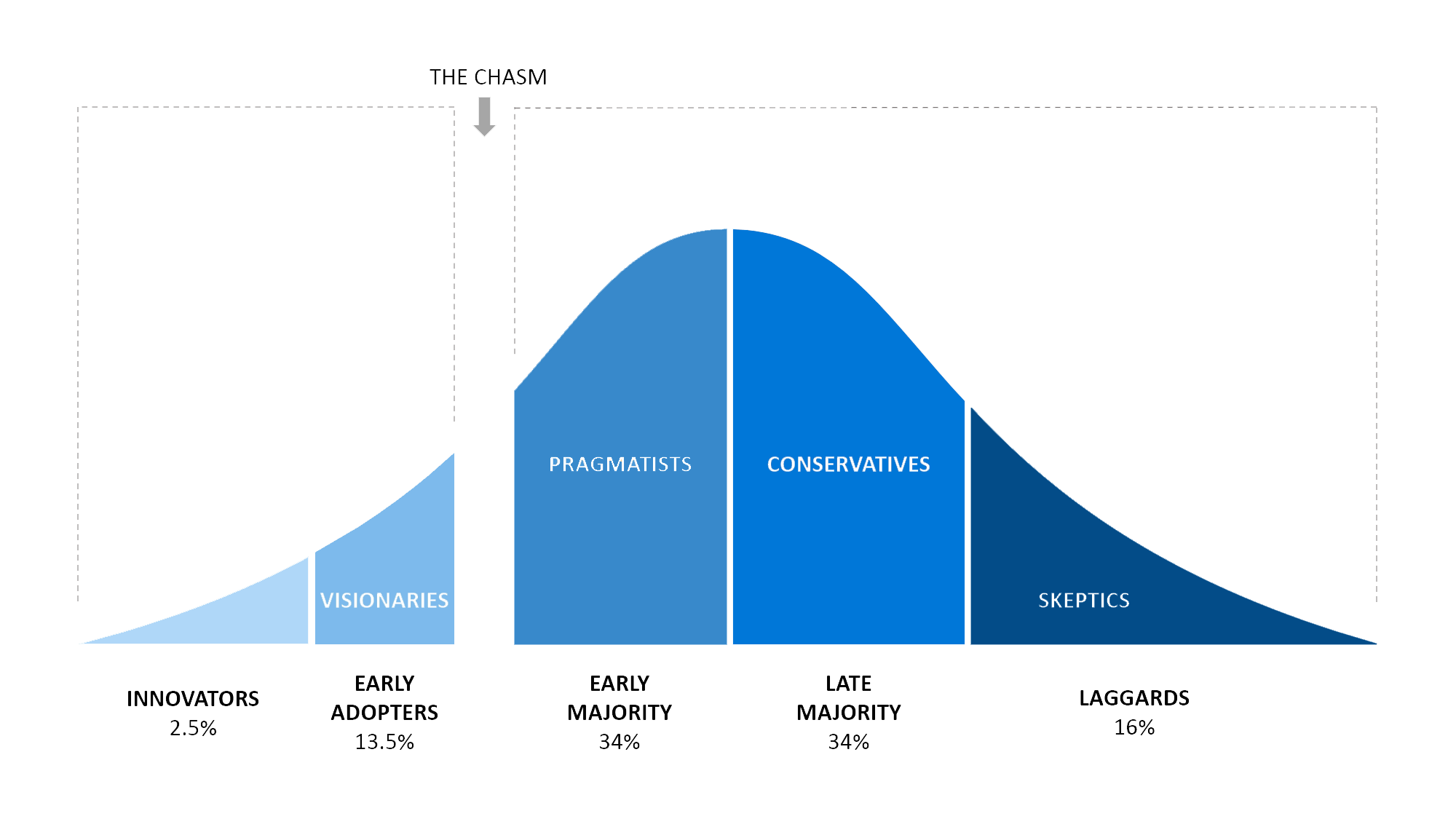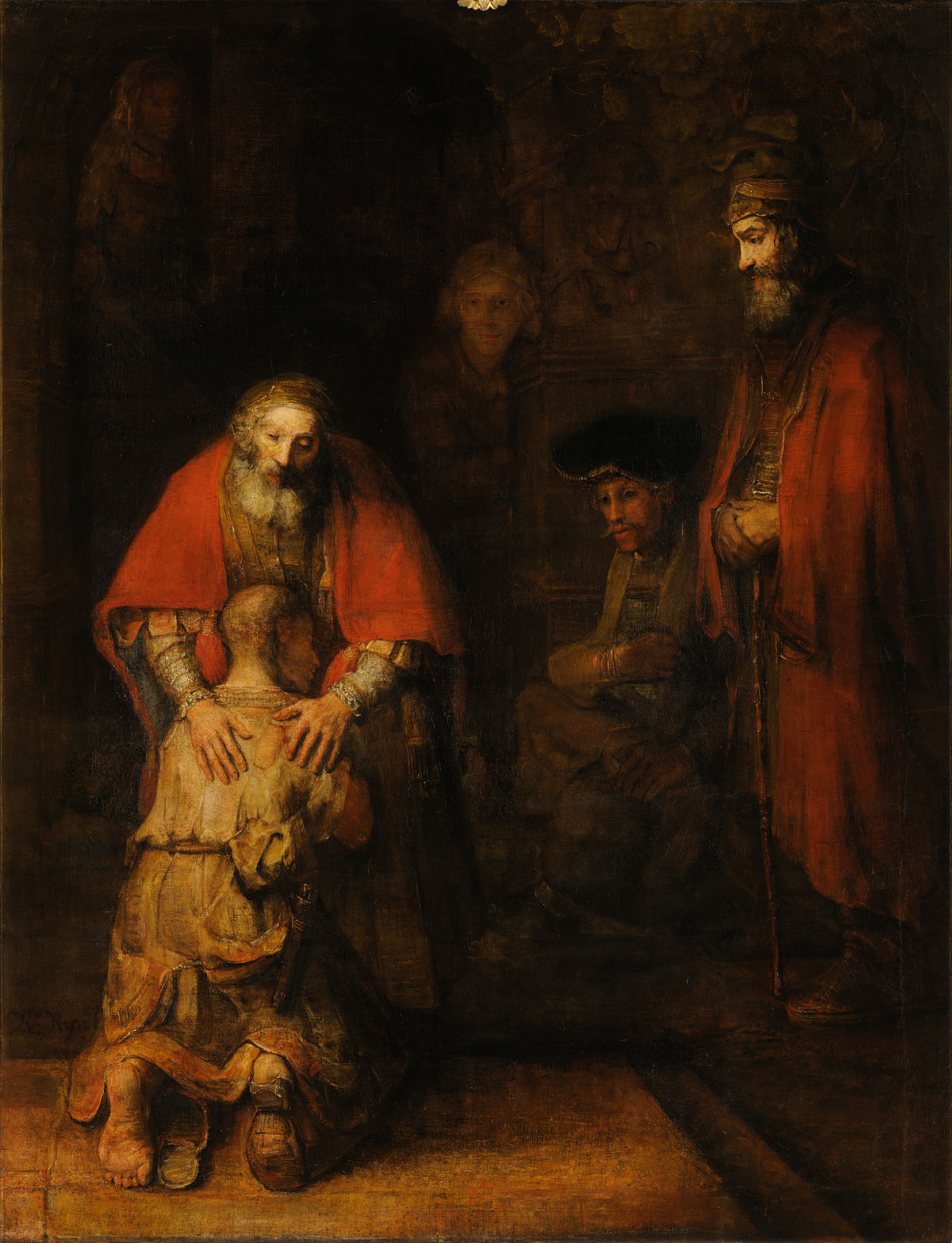Welcome to Session 2 of the “Book Club”
for Divine Renovation: Beyond the Parish by Fr. James Mallon.
Berkana Two Loop Theory

Six Stages of a Dying Church
1. Denial
“In this initial stage, a parish might experience numerical decline, but no one seems too concerned.” (34)
The statistics tell us what is happening, but they show a continuous trend that has been going on for 20, 30 or 40 years. Yet even 10 years ago people did not really seem to be that concerned.
“For those who have eyes to see, we need to ring the fire alarm at this point. Too often, however, Church leaders are firmly in the denial phase; no one really cares. It is essentially business as usual, and the folks who try to raise an alarm are viewed as an inconvenience, distraction, or threat.” (35)
“In this stage, the parish or diocese has become focused on itself, functioning somewhat like a club that exists to meet the needs of its members. This is the essence of a maintenance parish, whose primary purpose is to serve the needs of parishioners and not the salvation and transformation of the world beyond the parish.” (35)
“If your parish closed tomorrow, would anyone who isn’t a member care? Would they feel any difference? Or has your parish become self-serving, with negligible impact on the community?” (35)
2. Recalibration
“In this stage, an organisation admits that something is wrong and tries to fix the issue with one of two approaches, neither of which offers a comprehensive plan of change.” (35)
“The first approach is to double down on a losing strategy… Parish leaders continue their current strategy and throw more money, personnel, and resources at it.” (35)
The second approach is to do an old thing in a new way. “Instead of changing the fundamental model, they make minor tweaks and minor course corrections to the current model, but nothing substantial changes. This approach is obsessed with finding the silver bullet – the one program or event that will save the parish or diocese.” (36)
“Parishes and dioceses in this stage put on a workshop, bring in a popular speaker, or find an effective program like Alpha, and then wait for the fruit to emerge. The problem is that there really is not a silver bullet.” (36)
“Programs, workshops, speakers and events must flow from a clear vision, an intentional culture, and a leadership committed to deep change. The issues we face are systemic, and they require systemic responses.” (36)
“… More prevalent at the diocesan level.” (36)
“Church renewal, at every level, is about deep change.” (36)
“If what you do does not work, it does not work. It is time to find the courage to discern and follow through on the fundamental changes that have become critical.” (37)
3. Anger
- Parishioners blame the pastor
- The pastor blames the bishop
- Who knows who the bishops blame
- People get angry at young people for not coming to church
- People point the finger at people who only come twice a year, if they would just show up more regularly… All our problems would be solved…
- Others blame the culture – postmodernism, consumerism etc. Etc.
“Parishes move into this stage when they begin to realise that doubling down on the losing strategy is not working, or they discover that the magic bullet really does not have any magic at all. The problem in this stage is that parish leaders do not take responsibility for their lack of fruit. They get angry and choose to consciously or unconsciously deflect the blame to some other group or person(s).” (37)
“Leaders in the anger stage blame other people and often play the victim. They refuse to accept responsibility.” (37)
4. Exodus
PEOPLE HAVE LEFT.
The unchurched – They feel as guilty about not being at Mass on Sunday as you do about not showing up at the synagogue.
“Guilt as a motivator no longer has much authority.”
5. Desperation
“In this moment of the dying process, remaining community members finally open themselves up to the possibility of change – largely because there does not seem to be any other available option.
“looking at it from the outside, this desperation does not seem too bad, because it at least forces leaders to be open to some kind of change. In this stage of dying, however, openness to change is grounded not in conviction but in self-preservation.” (39)
“often the attitude of Church leaders in this stage is that we should bring people into our parishes so we can extend our lifespan… The motivation is primarily about what we want from people rather than what we want for them.” (39)
“In this time of desperation, we have a window of opportunity. Perhaps this experience of desperation can lead us to our knees, so that we can plead with the Lord to change our hearts and to renew the Church.” (39)
“This conversion will allow us to move from desperation to a dynamic commitment to change, not simply because we want to live but because we long to bear God’s fruit in the world. Thus we turn away from a calculating, survivalist practicality and embrace a heart for mission, sharing the Father’s love in Jesus Christ with others.” (39)
6. Death
“In this stage our parish or diocese becomes a sad and tragic statistic – tragic because that death did not need to happen” (39)
“That death probably has little to do with the Lord and everything to do with how the people have lived as a parish.” (40)
Roger’s Innovation Adoption Curve

“A secular change-management tool that looks at the distribution of change acceptance across a general population.” (68)
- 2.5% are Innovators. Will try new things to solve issues. Are hardwired to push forward. Less risk averse.
- 13.5% are Early Adopters. Will watch the innovators and if things go okay then they will get on board.
- Roughly 16% in total then will lead the change within a system.
There is then a delay between the Early Adopters and the Early Majority – The Chasm … The Early Majority will wait to see if there is positive work from the work of Innovators and Early Adopters. “If strong evidence exists that new approaches are working, and these approaches seem sustainable and reproducible, the Early Majority will, over time, embrace the new reality. Once the Early Majority does this, the Late Majority, another 34% of the population, will follow suit.” (69)
“The final group in the Rogers Curve is called Laggards, and they make up the remaining 16% of the population. In general, the Laggards resist all change and will never adopt the new reality. They exist in every community and every organisation, and will often be the most vocal group. They complain constantly, write anonymous letters and angry emails. Sadly, in church settings, these folks often cause leadership to question their direction and contemplate stopping.” (69)
How to discern about feedback.
- The first question – is the feedback anonymous. If so, simply ignore it.
- If it is not anonymous, the second question is whether this person is on board with the vision. Are they committed to where we are going?
- If the person is supportive of the vision, then the next question centres on the reason for the feedback. Is it theologically grounded or based on personal preference?
- The vast majority of complaints centre around personal preferences being unsettled. “We are messing with the personal inclinations, habits, and proclivities of people who do not like to be unsettled.” (70)
- Everyone has preferences; that is part of being human. “Missionary disciples too have preferences, but they will surrender any preference for the sake of the mission of the Church.” (70)
We only need to capture the hearts of 16% (the Innovators and Early Adopters) in our parishes and dioceses. (71)
“If you want to see authentic and sustainable transformation, identify the 16% (the Innovators and Early Adopters) among the clergy and laity, with whom you can work.
Who are the 16% of people in your diocese who have the vision, the passion, and the willingness to risk doing something new? Identify them, come around them, and work with them to lead the change, knowing that eventually others will get on board – though perhaps not the laggards who believe every new idea is useless.
We do not need to have everyone on board. We can work in phases.
“Instead of one strategic plan for the renewal of the diocese, we need to have at least three strategic plans: one for the 16% willing to do something new; one that is a kind of holding pattern plan for the Early and Late Majority, who will wait; and a plan of action for how to handle the Laggards who will write a letter of complaint if Jesus himself showed up at the parish as pastor invested in change.”(71)
Innovators show up start something fresh. They name the problems they see. For some they do not welcome others pointing out the issues with the system
“Within the Church, that means that those invested in the declining system raise all sorts of theological, cultural, and canonical roadblocks against the work of Innovators.
“Conscience asks the question, is it right?” – Martin Luther King
The Neccessity of Titanic Change

“The model we have for parishes in many places – and by model, I mean everything we take for granted about how parishes currently function, as well as the whole network of parishes that make up a diocese – is dying. It is sinking.” (66)
“Either we cling to the established structure and go down, or we salvage what we can and launch the life boats, so we can cooperate with the Holy Spirit in building something new. Many Catholics today, however, are like those Titanic passengers, so assured of the unsinkability of our ship that they find the reality of change too cold and noisy.” (66)
“The invitation for us now, in this historic moment, is to let go and return to our identity as a pilgrim people of God, ready to trust boldly where God is leading us. We need to let go with hope as we head to the lifeboats and build a new reality.” (66)
“The real question for us is “How badly do we want new life?” In talking, with many Catholics, I have witnessed an interesting dynamic. Given an explicit choice between dying and changing ..” many will choose death as long as it happens after they’re gone. (67)
We would hope that “this reaction in a deep misunderstanding about the nature and mission of the Church, but sometimes out of an intense selfishness. We have been given an incredible mission by the Lord, and yet we have made it all about us. Too many parishes are willing to ling to the sinking structure, even if it means cannibalizing the resources that would help build a new reality.” (67)
How badly do we, as parish and diocesan leaders, want new life? Are we willing to embrace a new vision for parish life, which may call us to stop doing some things that were once “successful” or are beloved by core members of the community?” (67)
Leadership = “the art of disappointing people at a rate they can accept.” – John Ortberg (67)
“When we lead change, we move away from people’s preferences to embrace a higher purpose or vision. It requires sacrifice from all of us: leaving what is familiar and comfortable, what may have defined us and our experience of being Catholic. We need to mobilise for the vision and create an infrastructure that supports and nurtures it.” (67/68)
“strive to suffer for the right thing rather than for the wrong thing” (68)
The Prodigal Son

10 Revelations about the Father
- He is outward looking
The fundamental orientation of the Church must be outward
“If we are not constantly intentional about maintaining a missionary posture, so many internal issues compete for our attention as leaders that we become exhausted and have nothing left for the outsider.” (79)
“We are called to holiness and mission, not to one or the other. We must live out these two truths at the same time.” (79)
- He is vigilant
“Are we focused on looking for men and women who are returning to God? Are we vigilant? Are we looking at all?”This is a challenge for us – “even when we do look outward, sometimes the farthest we get is the front door or the parking lot.” (80)
- He is moved
“we must ask ourselves as a Church – as dioceses and parishes – do we care? Is that care visceral? Are we moved by the plight of people who are lost?” (80)
- He goes to the Son
“Do we as a Church run out to those headed toward us, or are we satisfied to merely open the doors of the Church and hope those on the outside drift in? So often our best parishes do the latter, failing to realise that the obstacles preventing people from coming into our parishes are bigger than they have ever been. We are basically saying to the world, “We’re not going to you; you can come to us.” (82)
“It is almost as if we expect nonchurchgoers and nonbelievers to be missionaries, rather than the Church. “Leave your comfort zone and come to us,” we say in effect to those on the outside. “We’re not going to leave our comfort zones and go to you.” (82)
“The Church resembles a fishing fleet that never goes out to sea.” (83)
- He does not focus on the Son’s Repentance
“It does invite us to be gentle with others in their sin and brokenness as God has been to us, and to reflect on how well we, as parishes and dioceses, reflect the heart of the Father to others.” (84)
- He makes no reproach
If “we as a Church are going to reflect the Father’s heart to the world, then we have to wrestle with the vision of being a Church that does not reproach the sinner in search of forgiveness – even if we feel they have not expressed contrition in the way we think is most appropriate.” (85)
- He has a sense of urgency
Evangelisation – “Where is the sense of urgency? It is the most important thing that we can do. Please do not put it off.”“Make it one of the first things that you do – and not just for the folks within the walls of your parish. I know that some parishes embrace a strategy that says, “Let’s reach the people on the inside first.” We cannot, however, simply put off the mission to those on the outside. We must reflect the heart of the Father, becoming the kind of Church we are called to be.” (86)
- He kills the fattened calf
“When we celebrate a person, event, process, or milestone, we communicate its value to us.” (86)
“How do we as a parish, as a diocese, and beyond, celebrate what God celebrates and not just celebrate ourselves?” (87)
“The most important thing for us as a parish is helping people encounter Jesus Christ is a life-changing way and returning, or coming for the first time, to the Church and the sacraments. That’s what we celebrate.” (87)
- He has a heart for the older brother
“our parishes are filled with older brothers.” (88)
“The idea that leaders would choose not to focus all their attention on the nurturing, celebration and safety of the current community, and instead invest time, money, and resources into mission, is foreign to them.” (88)
“They “work in the fields” out of duty, not understanding their identity.” (88)
- He insists on the party